Thingiverse
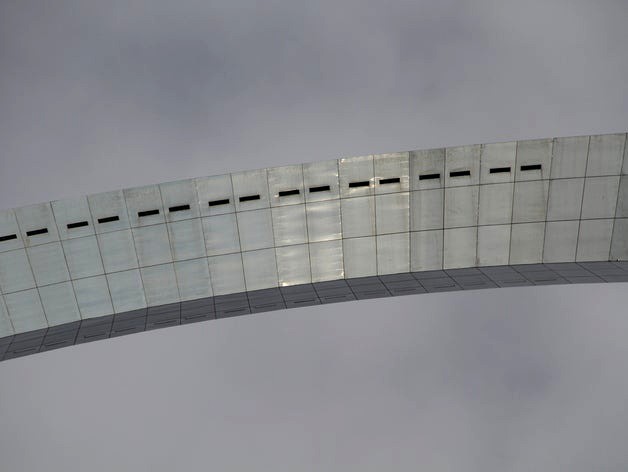
The Gateway Arch by CliffordWhite
by Thingiverse
Last crawled date: 2 years, 11 months ago
See the World!
This Challenge charged us makers to create something iconic -- a place or famous thing on this planet. The thing I decided to model for the Challenge is not just a famous place to see in the world. While it is a world-famous landmark, It is also a monument to those that went into the unknown to #SeeTheWorld. The people of the United States of America have always been among the forefront of those seeking to see new parts of this world. From our very pilgrimage to North America to Lewis and Clark's adventure, we have run full-speed into the unknown. From Alaska to the Moon, Americans have always been curious people.
The Gateway Arch in St. Louis, Missouri was built from 1963-1966 to specifically honor Lewis and Clark's expedition into the American west during the years of 1803 and 1804 and America's Westward expansion. At 630 feet, it is the tallest monument in the entire United States.
Design
The Arch's architect, Eero Saarinen, used very strict mathematics to describe the shape of his Arch. The use of these equations made it possible to make an exact 3D model using SolidWorks.
Centroid Curve:
The centroid curve is a line that passes through an imaginary point along the Arch's cross-section. This curve is considered a form of a catenary curve, and is governed by the following equation:y = 693.8597 - 68.7672cosh(0.0100333x)
Where Y is height about the ground, and X is distance from the center of the arch. Because SolidWorks does not support the hyperbolic cosine function, I converted that equation into a function of e^(x) using the definition of the hyperbolic cosine. The new equation became:y = 693.8597 - 34.3836(e^(0.0100333x)+e^(-0.0100333x))
Graphing this from -299.2239 to +299.2239 gave an accurate model of the centroid curve.
Cross-Section
Because the Arch's cross-section is not constant throughout, another function is used to calculate the area of any particular cross-section. (A cross-section being defined as a plane perpendicular to the centroid curve at any point):Q = 125.1406cosh(0.010333x)
Where Q is cross-sectional area. Because all cross-sections are equilateral triangles, I then derived the equation for an equilateral triangle's base length as a function of its area:B = (2*3^(3/4)*sqrt(Q)) / 3
Where B is the base length. I then combined these two equations to create an equation for the base length of a cross section as a function of its distance from the center of the arch:B = (2*3^(3/4)*sqrt(125.1406cosh(0.010333x))) / 3
(Yeah, I know that's a mess, but it works).
Modeling
I then added a number of points, at measured distances from the center, on the centroid curve that I had already graphed in SolidWorks. I created planes perpendicular to the centroid that contained these points. I then made sketches on these planes of each cross-section, using the dimensions calculated from the equations above. After creating about a dozen and a half of these cross-sections, I used a loft feature to create the solid shape of the arch.
3D Print-ability
In order to make the arch 3D printable, I had to split it into several separate sections, interconnected with pins. I used AutoDesk MeshMixer to scale and rotate the sections so that a flat side would always be facing the print bed. I also designed a base so it would be able to stand on its own.
The Middle Two Sections
Because I wanted to model the Arch in a high level of detail, but also wanted to be able to fit it in a sane amount of space, I had to come to a compromise -- I would model the solid shape of the entire arch at 1:1200 scale, then model the middle two sections at 1:120 scale. I also created a base for these two sections so that they make a classy display on their own.
Conclusion
The Gateway Arch stands as a masterpiece of mathematical architecture, beautiful as both art and math. It was a technologically unprecedented project that was engineered and built flawlessly. Today it stands as a monument to those who dared to #SeeTheWorld.
Credits
All the information I used in designing the Arch is available from various sources online, including but not limited to; The National Park Service, The University of Houston, The Mathematical Sciences Research Institute, and Wikipedia. Send me a personal message if you want any of the specific URLs I consulted.
This Challenge charged us makers to create something iconic -- a place or famous thing on this planet. The thing I decided to model for the Challenge is not just a famous place to see in the world. While it is a world-famous landmark, It is also a monument to those that went into the unknown to #SeeTheWorld. The people of the United States of America have always been among the forefront of those seeking to see new parts of this world. From our very pilgrimage to North America to Lewis and Clark's adventure, we have run full-speed into the unknown. From Alaska to the Moon, Americans have always been curious people.
The Gateway Arch in St. Louis, Missouri was built from 1963-1966 to specifically honor Lewis and Clark's expedition into the American west during the years of 1803 and 1804 and America's Westward expansion. At 630 feet, it is the tallest monument in the entire United States.
Design
The Arch's architect, Eero Saarinen, used very strict mathematics to describe the shape of his Arch. The use of these equations made it possible to make an exact 3D model using SolidWorks.
Centroid Curve:
The centroid curve is a line that passes through an imaginary point along the Arch's cross-section. This curve is considered a form of a catenary curve, and is governed by the following equation:y = 693.8597 - 68.7672cosh(0.0100333x)
Where Y is height about the ground, and X is distance from the center of the arch. Because SolidWorks does not support the hyperbolic cosine function, I converted that equation into a function of e^(x) using the definition of the hyperbolic cosine. The new equation became:y = 693.8597 - 34.3836(e^(0.0100333x)+e^(-0.0100333x))
Graphing this from -299.2239 to +299.2239 gave an accurate model of the centroid curve.
Cross-Section
Because the Arch's cross-section is not constant throughout, another function is used to calculate the area of any particular cross-section. (A cross-section being defined as a plane perpendicular to the centroid curve at any point):Q = 125.1406cosh(0.010333x)
Where Q is cross-sectional area. Because all cross-sections are equilateral triangles, I then derived the equation for an equilateral triangle's base length as a function of its area:B = (2*3^(3/4)*sqrt(Q)) / 3
Where B is the base length. I then combined these two equations to create an equation for the base length of a cross section as a function of its distance from the center of the arch:B = (2*3^(3/4)*sqrt(125.1406cosh(0.010333x))) / 3
(Yeah, I know that's a mess, but it works).
Modeling
I then added a number of points, at measured distances from the center, on the centroid curve that I had already graphed in SolidWorks. I created planes perpendicular to the centroid that contained these points. I then made sketches on these planes of each cross-section, using the dimensions calculated from the equations above. After creating about a dozen and a half of these cross-sections, I used a loft feature to create the solid shape of the arch.
3D Print-ability
In order to make the arch 3D printable, I had to split it into several separate sections, interconnected with pins. I used AutoDesk MeshMixer to scale and rotate the sections so that a flat side would always be facing the print bed. I also designed a base so it would be able to stand on its own.
The Middle Two Sections
Because I wanted to model the Arch in a high level of detail, but also wanted to be able to fit it in a sane amount of space, I had to come to a compromise -- I would model the solid shape of the entire arch at 1:1200 scale, then model the middle two sections at 1:120 scale. I also created a base for these two sections so that they make a classy display on their own.
Conclusion
The Gateway Arch stands as a masterpiece of mathematical architecture, beautiful as both art and math. It was a technologically unprecedented project that was engineered and built flawlessly. Today it stands as a monument to those who dared to #SeeTheWorld.
Credits
All the information I used in designing the Arch is available from various sources online, including but not limited to; The National Park Service, The University of Houston, The Mathematical Sciences Research Institute, and Wikipedia. Send me a personal message if you want any of the specific URLs I consulted.
Similar models
3dwarehouse
free

ACOSH Function
... function
3dwarehouse
a sample inverse hyperbolic cosine function #component #cosine #dc #dynamic #function #hyperbolic #inverse
3dwarehouse
free

COSH Function
...nction
3dwarehouse
a sample cosh hyperbolic cosine function #component #cosh #cosine #dc #dynamic #example #function #hyperbolic
thingiverse
free

St. Louis Gateway Arch by wwebber
...eath the arch. also, the elliptical patches of grass on the surface are not to scale (as the grass is not actually 5 feet tall).
thingiverse
free
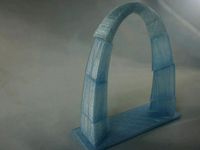
Gateway Arch Puzzle by mcgum
...s a puzzle will add an element of interest and illustrate that the stability of the structure rests in the center keystone block.
3dwarehouse
free

Gateway Arch
...d calculus to create each of the near 500 triangles in this model. please credit if used! #arch #gateway_arch #monument #st_louis
thingiverse
free

Xymphaedron by concave
...ron by concave
thingiverse
3d expression of a mathematical equation of volume using a cube bounded cross sectional area formula.
thingiverse
free

Tractrix curve, used for a horn/speaker & valve head by MissC3D
...c functions for exponential ones (solidworks doesn't have an input for them) http://en.wikipedia.org/wiki/hyperbolic_function
thingiverse
free

Uniformly interleaved decorative knots by kitwallace
...e designs..
see my blog post http://kitwallace.tumblr.com/post/169901554274/uniform-interleaving-of-parametric-knots for details
3dwarehouse
free

Model of The St. Louis (Gateway) Arch
...est. model created by michael birdsong. #arch #gateway #louis_and_clark #memorial #monument #signature #st_louis #statue #wesward
thingiverse
free

Hyperbolic Paraboloid by AGPapa
...ines demonstrates the doubly ruled nature of hyperbolic paraboloids. i made this seemingly complex object from very simple rules.
Cliffordwhite
thingiverse
free

Headlight Adjusting Nut by CliffordWhite
...ve found are so cheap that the barely stay in place. this is designed to be used with the original screw, and a new standard nut.
thingiverse
free

Mercedes 220SEb/c Fuel Pump Rotor by CliffordWhite
...suspect it will work with any of the 220 series, and possibly any of the early fuel injection fuel pumps (not the injector pump).
thingiverse
free

Lego Technics Compatible HTC One M8 Phone Holder by CliffordWhite
...et so that the bracket does not depress the power button. however, the power button cannot be pressed while the phone is mounted.
Gateway
turbosquid
$45

gateway
... 3d model gateway for download as max, max, max, obj, and fbx on turbosquid: 3d models for games, architecture, videos. (1548206)
turbosquid
$36

p0011 - gateway
...id
royalty free 3d model p0011 - gateway for download as obj on turbosquid: 3d models for games, architecture, videos. (1292778)
turbosquid
$20

bamboo gateway
...uid
royalty free 3d model bamboo gateway for download as skp on turbosquid: 3d models for games, architecture, videos. (1595645)
turbosquid
$60

Gateway of India
... available on turbo squid, the world's leading provider of digital 3d models for visualization, films, television, and games.
turbosquid
$5
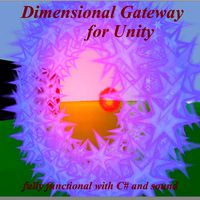
Dimensional Gateway
... available on turbo squid, the world's leading provider of digital 3d models for visualization, films, television, and games.
turbosquid
$2

Gateway plasma
... available on turbo squid, the world's leading provider of digital 3d models for visualization, films, television, and games.
3d_export
$50
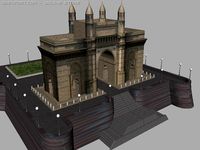
Gateway of India 3D Model
...gateway of india 3d model
3dexport
gateway on india indiagate
gateway of india 3d model rohan gaikwad 20944 3dexport
3d_ocean
$5

Gateway Door 01
...with wood texture created in cinema4d studio r14 c4d, dxf, fbx,obj,jpg, png,material inside. c4d , dxf , fbx , total file(8,81mb)
3d_ocean
$8

Gateway Door 03
...ated in cinema4d studio r14 3ds, c4d, dxf, fbx,obj,jpg, png,material inside.3ds(454kb) c4d , dxf , fbx , obj , total file(6,01mb)
3d_ocean
$6
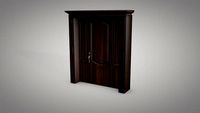
Gateway Door 02
...eated in cinema4d studio r14 3ds,c4d, dxf, fbx,obj,jpg, png,material inside.3ds(570kb) c4d , dxf , fbx , obj , total file(7,20mb)
Arch
3d_export
free
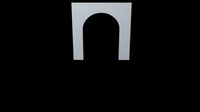
arch
...arch
3dexport
arch
design_connected
$11

Arch
...arch
designconnected
bonaldo arch computer generated 3d model.
turbosquid
$3

arch
...ch
turbosquid
royalty free 3d model arch for download as obj on turbosquid: 3d models for games, architecture, videos. (1551270)
3d_export
$5

ruined arch
...ruined arch
3dexport
ruined arch
turbosquid
$25
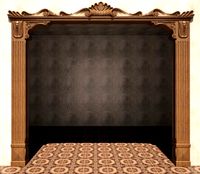
Arch
... available on turbo squid, the world's leading provider of digital 3d models for visualization, films, television, and games.
turbosquid
$16

Arch
... available on turbo squid, the world's leading provider of digital 3d models for visualization, films, television, and games.
turbosquid
free

Arch
... available on turbo squid, the world's leading provider of digital 3d models for visualization, films, television, and games.
turbosquid
free

arches
... available on turbo squid, the world's leading provider of digital 3d models for visualization, films, television, and games.
3ddd
$1

Portal/ Arch
...ортал , арка , проем
portal/ arch classic style
3d_export
free
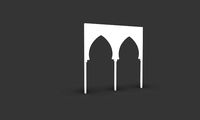
Moroccan arch
...moroccan arch
3dexport
moroccan arch suitable for restaurant, villa and lobby design
